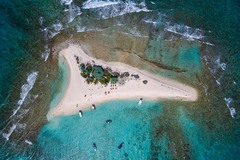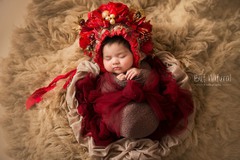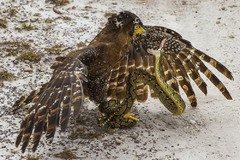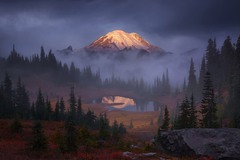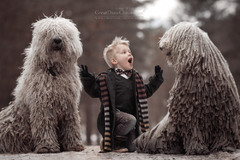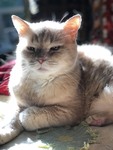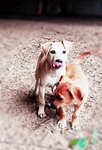|
These fantastic pictures are the finalists in the Wildlife Photographer of the Year competition 2016. This year’s competition is attracting almost 50,000 entries from professionals and amateurs across 95 countries. All images are rated in three categories: originality, creativity, and technical excellence. The 52nd Wildlife Photographer of the Year exhibition will open at the Natural History Museum in London on Friday October 21. Source: www.nhm.ac.uk 
1 Splitting the catch: Taken by Audun Rikardsen, from Norway. Sometimes it's the fishing boats that look for the killer whales and humpbacks, hoping to locate the shoals of herring that migrate to these Arctic Norwegian waters. But in recent winters, the whales have also started to follow the boats. Here a large male killer whale, or orca, feeds on herring that have been squeezed out of the boat's closing fishing net. He has learnt the sound that this type of boat makes when it retrieves its gear and homed in on it. The relationship would seem to be a win-win one, but not always. Whales sometimes try to steal the fish, causing damage to the gear, and they can also become entangled in the nets, sometimes fatally, especially in the case of humpbacks. The search for solutions is under way, including better systems for releasing any whales that get trapped. 
2 Collective courtship: By Scott Portelli, from Australia. Thousands of giant cuttlefish gather each winter in the shallow waters of South Australia's Upper Spencer Gulf for their once-in-a-lifetime spawning. Malescompete for territories that have the best crevices for egg-laying and then attractfemales with mesmerizing displays of changing skin colour, texture and pattern. Rivalry among the world's largest cuttlefish - up to a metre (3.3 feet) long - is fierce, as males outnumber females by up to eleven to one. A successful, usually large, male grabs the smaller female with his tentacles, turns her to face him (as here) and uses a specialized tentacle to insert sperm sacs into an opening near her mouth. He then guards her until she lays the eggs. The preoccupied cuttlefish (the male on the right) completely ignored Mr Portelli, allowing him to get close. 
3 Termite tossing: By Willem Kruger, from South Africa. Termite after termite after termite - using the tip of its massive beak-like forceps to pick them up, the hornbill flicks them in the air and then swallows them. Foraging beside a track in South Africa's semi-arid Kgalagadi Transfrontier Park, the southern yellow-billed hornbill was deeply absorbed in snacking. 
4 Nosy neighbour: By Sam Hobson, from the UK. Mr Hobson knew exactly who to expect when he set his camera on the wall one summer's evening in a suburban street in Bristol. He wanted to capture the inquisitive nature of the urban red fox in a way that would pique the curiosity of its human neighbours about the wildlife around them. This was the culmination of weeksof scouting for the ideal location, a quiet, well-lit neighbourhood, where the foxeswere used to people (several residents feed them regularly) and the right fox. For several hours every night, Sam sat in one fox family's territory, gradually gaining their trust until they ignored his presence. 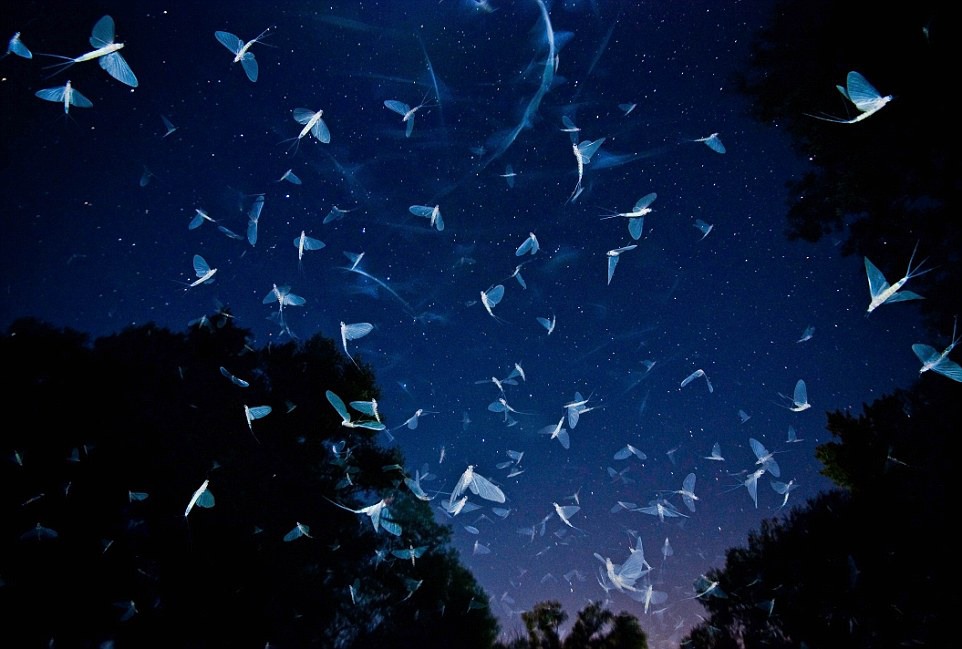
5 Swarming under the stars: By Imre Potyó, of Hungary. After a few decades, the Danube mayfly (Ephoron virgo) have returned to the river Danube, probably due to the increasing water quality. The photographer said: 'The fantastic mass swarming of these mayflies is one of the most exciting phenomenon for me. My image was taken in a dark, near-natural bank on a tributary of the Danube with long exposure, flash and flashlight. Unfortunately, the lamp-lit bridges have negative influence to them, because they are attracted to the lamps, become exhausted, lay their eggs to the asphalt roads of the bridge and perish immediately. The team of the Danube Research Institute in cooperation with the Environmental Optics Laboratory plan to solve this biooptical and environmental problem. This image is very precious to me as I can draw the attention to these spectacular water insects and their complex ecological light trap'. 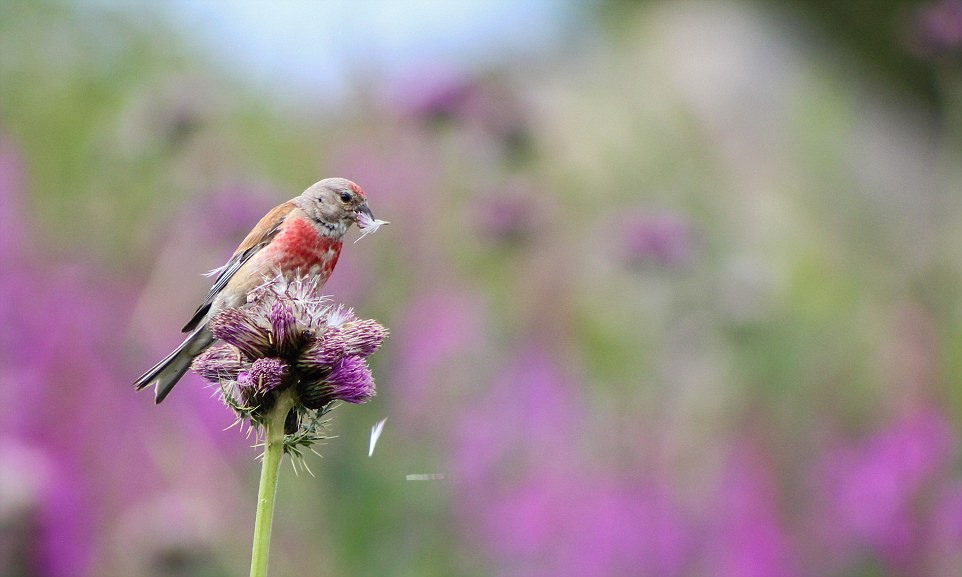
6 Thistle-plucker: By Isaac Aylward, of the UK. Try keeping a flying linnet in sight while scrambling down rocky embankments holding a telephoto lens. Isaac did, for 20 minutes. He was determined to keep pace with the linnet, which he spotted while hiking in Bulgaria's Rila Mountains, finally catching up with the tiny bird when it settled to feed on a thistle flowerhead. 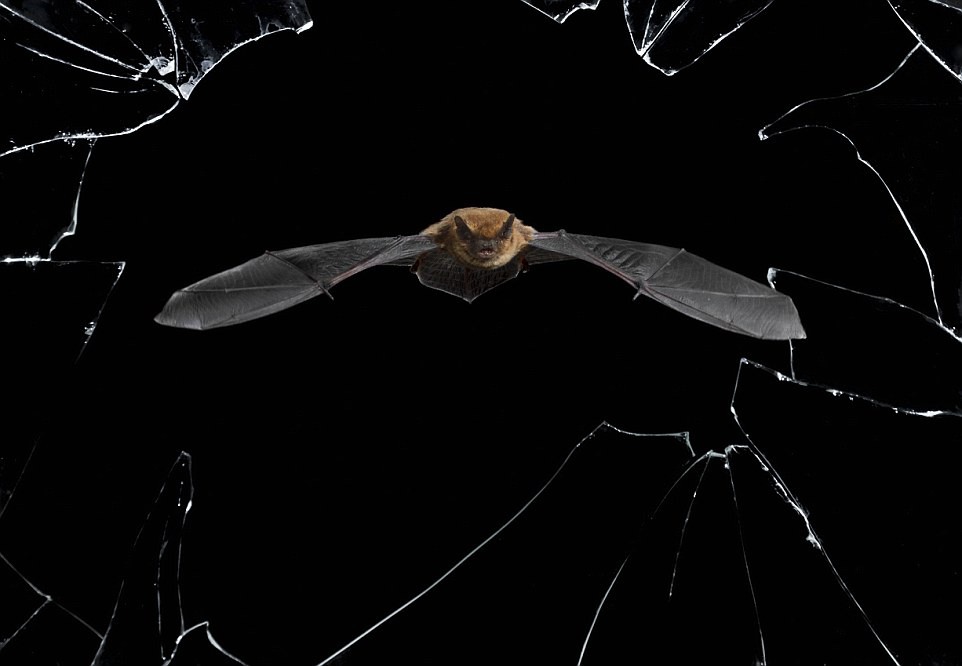
7 Crystal precision, by Mario Cea of Spain. Every night, not long after sunset, about 30 common pipistrelle bats emerge from their roost in a derelict house in Salamanca, Spain, to go hunting. Each has an appetite for up to 3,000 insects a night, which it eats on the wing. Its flight is characteristically fast and jerky, as it tunes its orientation with echolocation to detect objects in the dark. The sounds it makes is too high-pitched for most humans to hear, but creates echoes that allow it to make a sonic map of its surroundings. Mario positioned his camera precisely so that it was level with the bats' exit through a broken window and the exact distance away to capture this astonishing head-on shot. 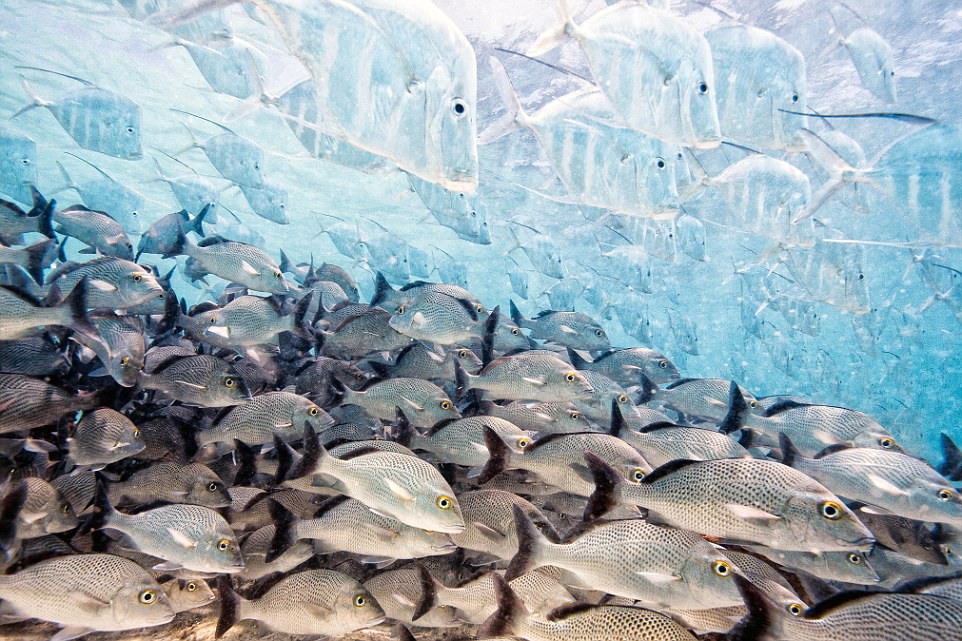
8 The disappearing fish: By Iago Leonardo of Spain. In the open ocean, there's nowhere to hide, but the lookdown fish - a name it gets from the steep profile of its head, with mouth set low and large eyes high - is a master of camouflage. Recent research suggests that it uses special platelets in its skin cells to reflect polarized light (light moving in a single plane), making itself almost invisible to predators and potential prey. The platelets scatter polarized light depending on the angle of the sun and the fish, doing a better job than simply reflecting it like a mirror. This clever camouflage works particularly well when viewed from positions of likely attack or pursuit. What is not yet clear is whether the fish can increase its camouflage by moving the platelets or its body for maximum effect in the ocean's fluctuating light. 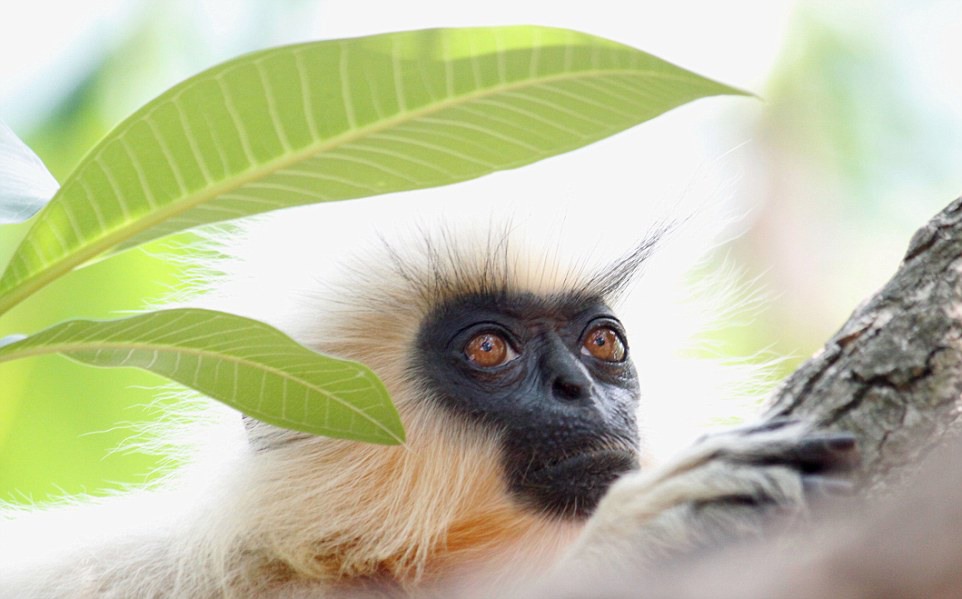
9 Golden relic: By Dhyey Shah of India. With fewer than 2,500 mature adults left in the wild, in fragmented pockets of forest in northeastern India (Assam) and Bhutan, Gee's golden langurs are endangered. Living high in the trees, they are also difficult to observe. But, on the tiny man-made island of Umananda, in Assam's Brahmaputra River, you are guaranteed to see one. This photograph was taken at the site of a temple dedicated to the Hindu god Shiva, but the island is equally famous for its introduced golden langurs. 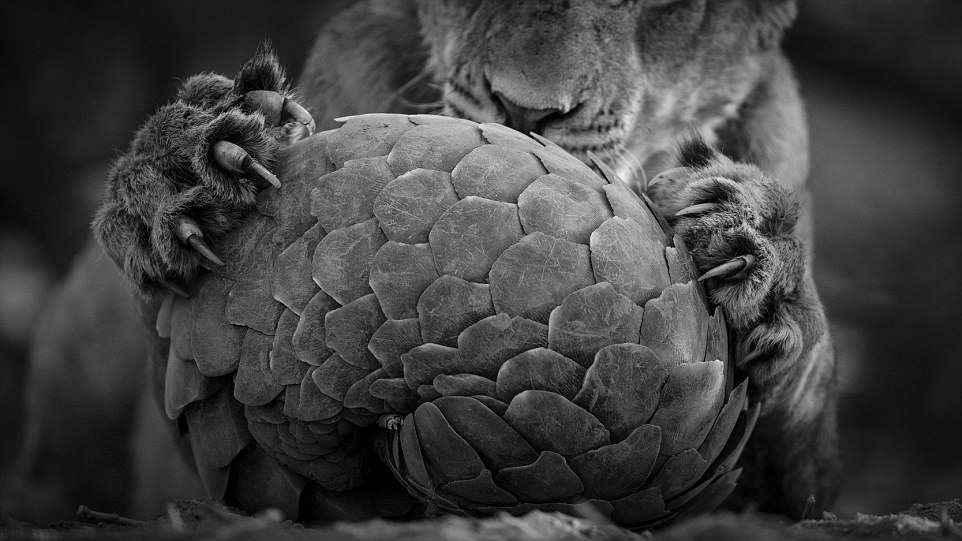
10 Playing pangolin: By Lance van de Vyver, from New Zealand/ South Africa. Lance had tracked the pride for several hours before they stopped to rest by a waterhole, but their attention was not on drinking. The lions, in South Africa's Tswalu Kalahari Private GameReserve, had discovered a Temminck's ground pangolin. This nocturnal, ant-eating mammal is armour-plated with scales made of fused hair, and it curls up into an almost impregnable ball when threatened. Pangolins usually escape unscathed from big cats - though not from humans, whose exploitation of them for the traditional medicine trade is causing their severe decline. Mr van de Vyver said: 'But these lions just wouldn't give up. They rolled it around like a soccer ball and every time they lost interest, the pangolin uncurled and tried to retreat, attracting their attention again.
|
|



